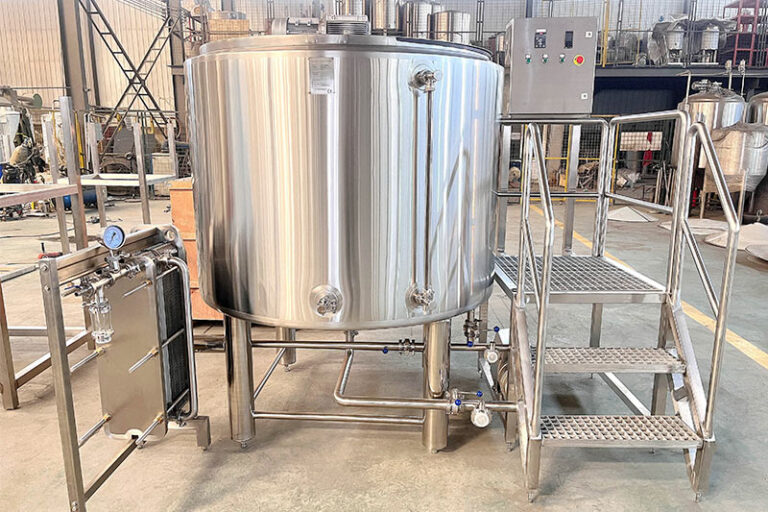Kombucha Brewing Equipment Material Types
Kombucha brewing containers, brewers can choose from a variety of materials and designs.
- Glass containers: Glass is a popular choice because it is non-reactive, meaning it will not chemically react with the kombucha during the fermentation process. It is also easy to clean and allows brewers to monitor the fermentation process visually. However, glass is fragile and heavy, especially in large sizes.
- Ceramic containers: Ceramic containers are beautiful to look at and are generally safe for brewing kombucha as long as they are coated with a lead-free, food-grade glaze. The opacity of ceramic protects the kombucha from too much light, which can interfere with the fermentation process.
- Stainless steel containers: Stainless steel is durable, lightweight, and unbreakable, making it an excellent choice for kombucha brewers. Stainless steel is also completely non-reactive.
- Plastic containers: While plastic containers are the most affordable and lightest weight option, it is generally not recommended to use plastic containers for brewing kombucha due to the risk of scratching the kombucha and leaching chemicals into the kombucha, especially if the plastic is not food-grade or BPA-free.
Key Equipment for Kombucha
- Brewing Vessels: These are large vessels where the main fermentation takes place. Stainless steel tanks are popular for their durability and ease of cleaning.
- Heating and Cooling Systems: Maintaining the proper temperature is essential for fermentation. You need systems to heat and cool your brew to ensure it stays within the optimal temperature range.
- Filtration Systems: To ensure your kombucha is free of harmful particles, a good filtration system is essential.
- Bottling and Packaging Equipment: Once your kombucha is ready, you will need equipment to bottle and package it efficiently.
- Cleaning and Sanitizing Equipment: Keeping your equipment clean is essential to prevent contamination. Invest in high-quality cleaning and sanitizing tools.

How do you choose the right kombucha equipment?
Usage requirements and locations
Equipment type and capacity
Kombucha equipment is generally divided into different types such as hand-poured equipment, fully automatic equipment, and semi-automatic equipment. Each type has its own characteristics and applicable scenarios. Hand-poured equipment is generally suitable for personal use or small-scale production, while fully automatic and semi-automatic equipment is suitable for places that require large-scale production and frequent use.
Capacity is also an important factor to consider when choosing equipment. Choose the capacity of the equipment according to the expected usage to ensure that it can meet daily needs and avoid frequent overload or waste of equipment.
Function and performance
- Temperature control: It can accurately control the water temperature to ensure the consistency of taste of each cup of tea.
- Preset programs: Set brewing programs for different types of tea to simplify the operation process.
- Automatic cleaning function: Simplify the daily maintenance and cleaning of the equipment.
- Water quality management system: Ensure the purity and suitability of water quality, which is crucial to the impact on tea.
- Choosing the right function can improve the quality of tea and the convenience of use, but you should also weigh the relationship between function and price according to actual needs.
Quality and brand reputation
Choosing a well-known brand and well-reputed kombucha equipment can better guarantee the quality and long-term reliability of the equipment. Brand reputation is not only about the quality of the product itself but also reflected in after-sales service and technical support, which is crucial for the maintenance and care of the equipment. You can consult Micet Craft, they are top experts in this regard and can customize the equipment you want for you.
Frequently Asked Questions
Q: How often should I clean my kombucha brewing container?
A:Clean thoroughly before and after each brew cycle to prevent mold and bacterial contamination.
Q: How big should my kombucha brewing container be?
A: It should be large enough to hold the amount of kombucha you plan to brew regularly, which is usually one to five gallons for a home brewer.
Q: Do I need a special container for secondary fermentation?
A: While not mandatory, using a glass bottle with a tight-fitting lid for secondary fermentation helps achieve carbonation and flavor development.
Q: How do I clean and sanitize my kombucha equipment?
A: Wash all equipment in hot, soapy water and rinse thoroughly, then sanitize with a food-grade sanitizer.


